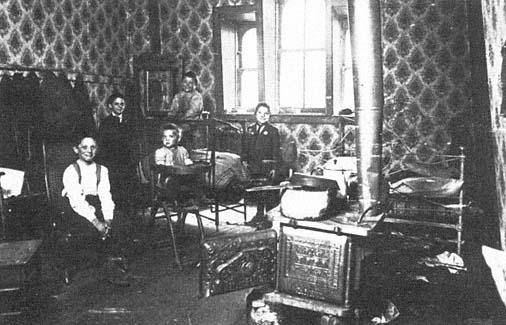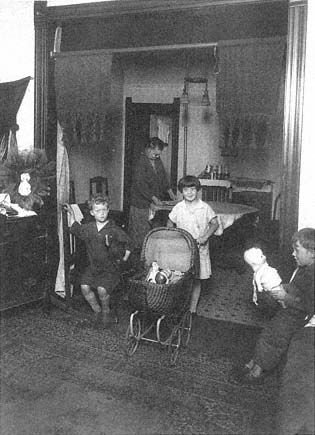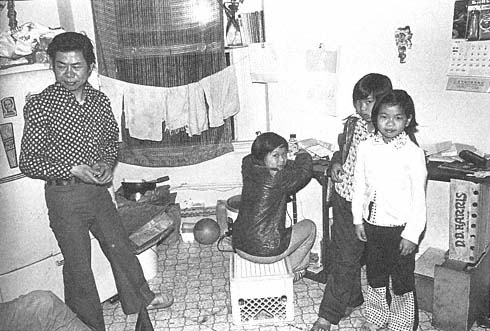The SRO Crisis as a Subset of Today's Hotel Life
SRO hotels are a subset of hotel life but its most important subset, both historically and in the present. Inexpensive hotels have pushed the traditional patterns of hotel life to social and practical limits. Statistics from most cities show that since World War II the United States has been losing affordable hotel homes at staggering rates and not replacing them. Downtown hotel owners, to improve their income or to eliminate management problems, have converted SROs to tourist rooms or other uses, torn the buildings down and built office towers, or simply closed the buildings. Between 1975 and 1980, San Francisco landowners eliminated 6,085 units, almost a fifth of the city's entire stock of residential hotel units. Chicago lost almost 23,000 units between 1973 and 1984.[24] A typical public housing project has about 250 units; thus, Chicago's
loss—in units—is equivalent to the loss of 92 housing projects. Some observers see these losses as positive developments—the removal of substandard housing and unwanted neighbors. To others, this wholesale closing and destruction of residential hotels is a major tragedy and a root cause of homelessness in the United States. These opposing views are not new; they have existed at least since the 1860s. Essential resource or public nuisance? How can one housing type be called both for more than one hundred years? How can the question remain open when the homes of as many as two million Americans depend on the outcome?
The lives of SRO residents inextricably intertwine with downtown hotel buildings; some residents literally cannot exist without them. Few, if any, housing alternatives for these residents exist. When owners close a building, tenants are lucky if they can find a worse hotel at higher rents. As the hotel stock dwindles, the option of moving evaporates, and tenants move to the streets. The street option has become increasingly evident in the numbers of America's homeless and street people. Even officials who dislike hotel life become alarmed as they realize that the closing of a 100-room hotel means that perhaps 150 more people may be living on the streets.[25]
In part because of the SRO crisis, myths about today's hotel residents abound. Hotel people are supposedly all friendless, isolated, needy, and disabled; all elderly; all on welfare; all elderly men; or all welfare mothers with three young children. All are presumably socially marginal, all mildly psychotic, all alcoholics or drug addicts, all drifters and transients who never live anywhere more than a few months; they are thought to be people whose homes cost taxpayers millions of dollars because of political corruption and bureaucratic waste. In spite of residents like Cyril Magnin and Dorothy Johnson, the most pervasive misconception about today's hotel residents is that they are all poor.[26] Journalists have made "welfare hotel" a synonym for all hotel life. In New York and other American cities, inexpensive hotels have become, in Jonathan Kozol's phrase, refugee camps for the American poor.[27] Each of these characteristics is sadly true of conditions in particular SRO buildings. However, not all SROs and certainly not all residential hotels with higher rents reflect such conditions.
Several recent studies dispel the stereotypes. For instance, fewer hotel tenants live on welfare than newspaper headlines suggest. Workers liv-
ing in hotels are still important to the urban economy. The authors of a San Diego study found that over half of the residents (and often more) were "independent, self-reliant individuals who were not dependent on public or private social services, nor had they been in the past." The older tenants often had fixed incomes, and the average tenure at the longest-held job was about twenty-one years. At the cheapest price range, a 1985 study of the SRO residents in Chicago found "a small prosperous minority, a majority barely earning enough to make ends meet, and a large minority of impoverished workers."[28] Where racial and ethnic minorities have low incomes, there hotels are also typically an important housing resource. In New York, a third of all SRO residents are black; a quarter are Hispanic. In San Francisco and Los Angeles, newly arrived families from Southeast Asia make up an increasing proportion of hotel residents. In San Francisco's Clayton Hotel, half of the residents are retired Filipino or Chinese laborers who, like Felix Ayson, have lived in one hotel seasonally for twenty to forty years.[29]
Not all single room occupants are single people. In New York, one-half of the SRO occupants are single; they occupy about three-fourths of the city's SRO units. Nor are all hotel residents transients. Some do move frequently, but the majority of America's hotel tenants move no more often—in many cases less often—than apartment renters.[30] Visiting nurses in the 1970s used to joke that "you could tell how long someone had lived in their hotel room by counting the layers of nicotine on the walls."[31] Their joke described both long residence and poor building maintenance. Nor are all SRO tenants elderly. The average elderly population in a city's hotels is about one-half of the total number of SRO occupants. In New York City in 1985, 43 percent of all SRO residents were under forty years old, and an additional 32 percent were between forty and sixty. Also contrary to popular opinion, the demand for hotel life among the elderly is not dwindling.[32]
More than other types of hotels, today's SROs have fueled a fierce debate about the history and the future of hotel life. Hotels are often the cheapest private housing available close to downtown. Many housing professionals and social workers today insist that hotel living is not only viable but essential to urban economy and urban society. Hotels, the apologists argue, are a valuable civic resource and respectable housing. The hotel defenders say that the people who choose hotel life do so

Figure 1.5
A hotel family of Eastern European immigrants in Chicago, 1910.

Figure 1.6
A hotel family of recent migrants to Chicago, 1929.

Figure 1.7
A hotel family of Southeast Asian immigrants in San Francisco, 1980.
for good reasons. The promoters propose (against loud clamors from the other side) that cities should be building more residential hotels.
Although the term "SRO" is relatively new, for at least one hundred years other commentators have railed against the real and implied dangers of single-room housing. In 1916, Walter Krumwilde, a Protestant minister, saw the rooming house or boardinghouse system "spreading its web like a spider, stretching out its arms like an octopus to catch the unwary soul."[33] Early social workers abhorred the idea of commercialized, retail housing for the poor. Generations of hotel critics have used photographs of families living in single rooms to shock Americans into recognition of SRO problems and to prompt ameliorative action. These different eras of hotel family portraits have a haunting similarity (figs. 1.5, 1.6, 1.7). Today many city health officials, architects, city planners, and politicians still argue that no one should live in hotels. Hotels, they say, exhibit severe social and physical maladjustment. Eliminating the hotel stock, the critics argue, will eliminate a public nuisance. One of the recurring complaints from people who are fighting for hotel residents is that no one seems to know very much about hotel people or the buildings they live in. This ignorance is not an accident.